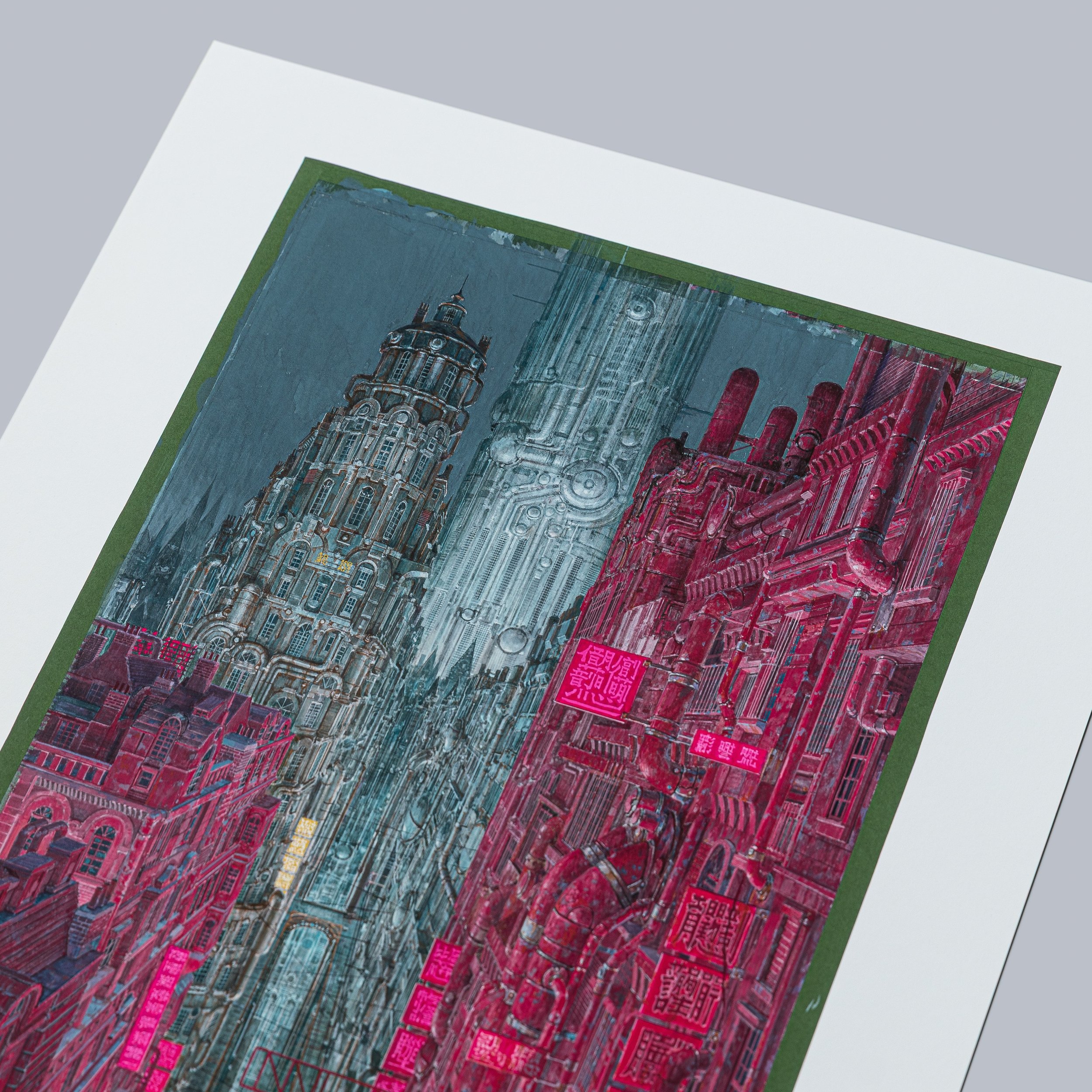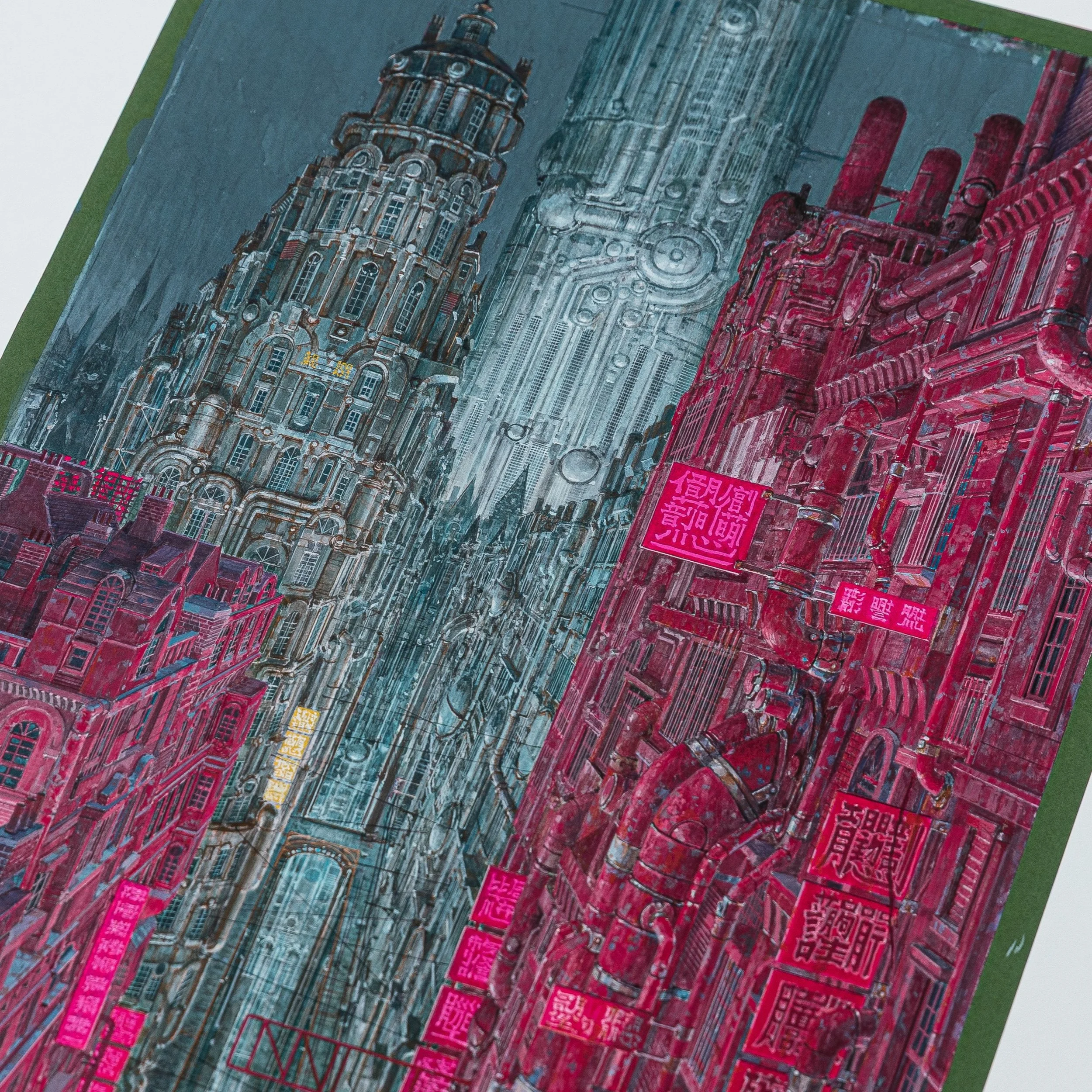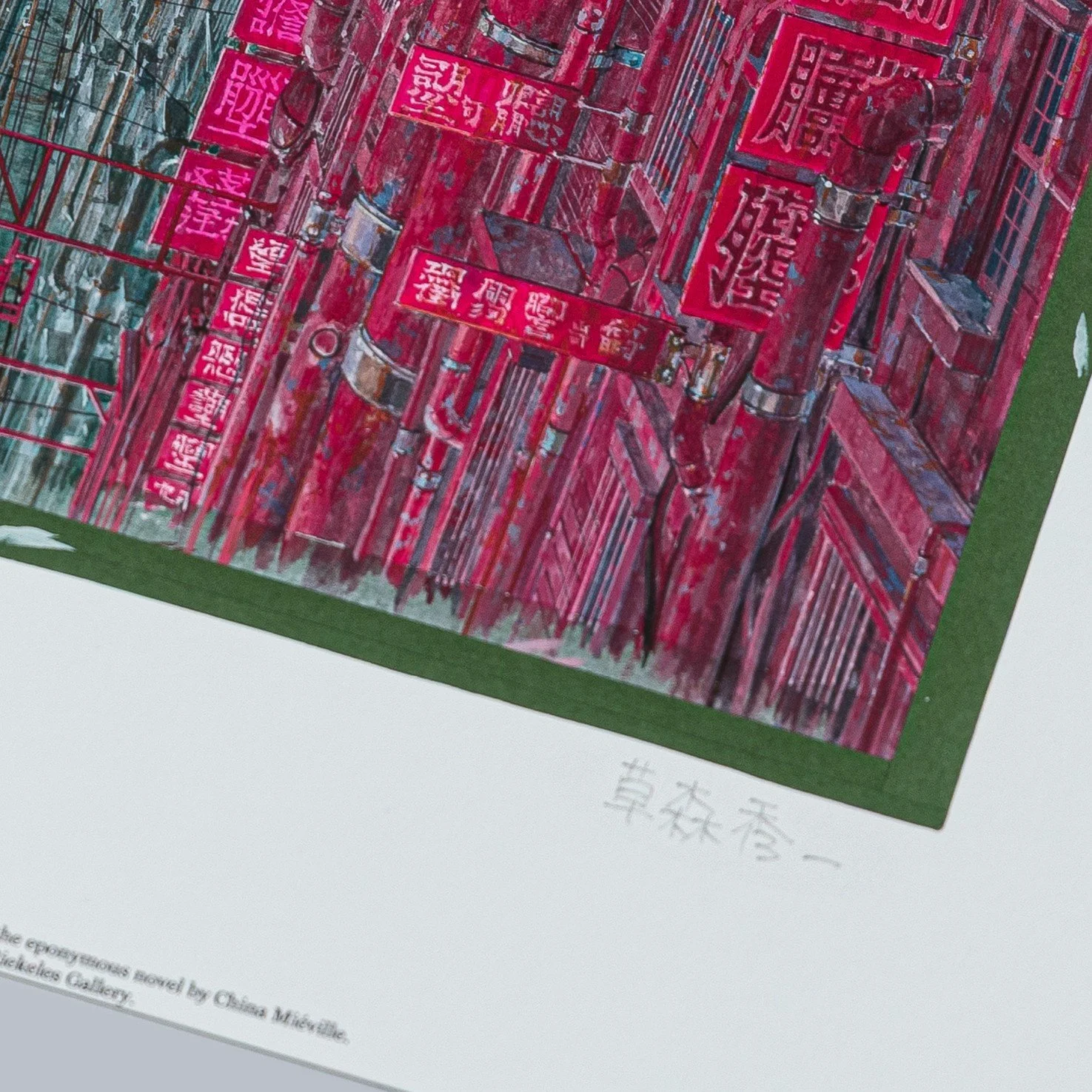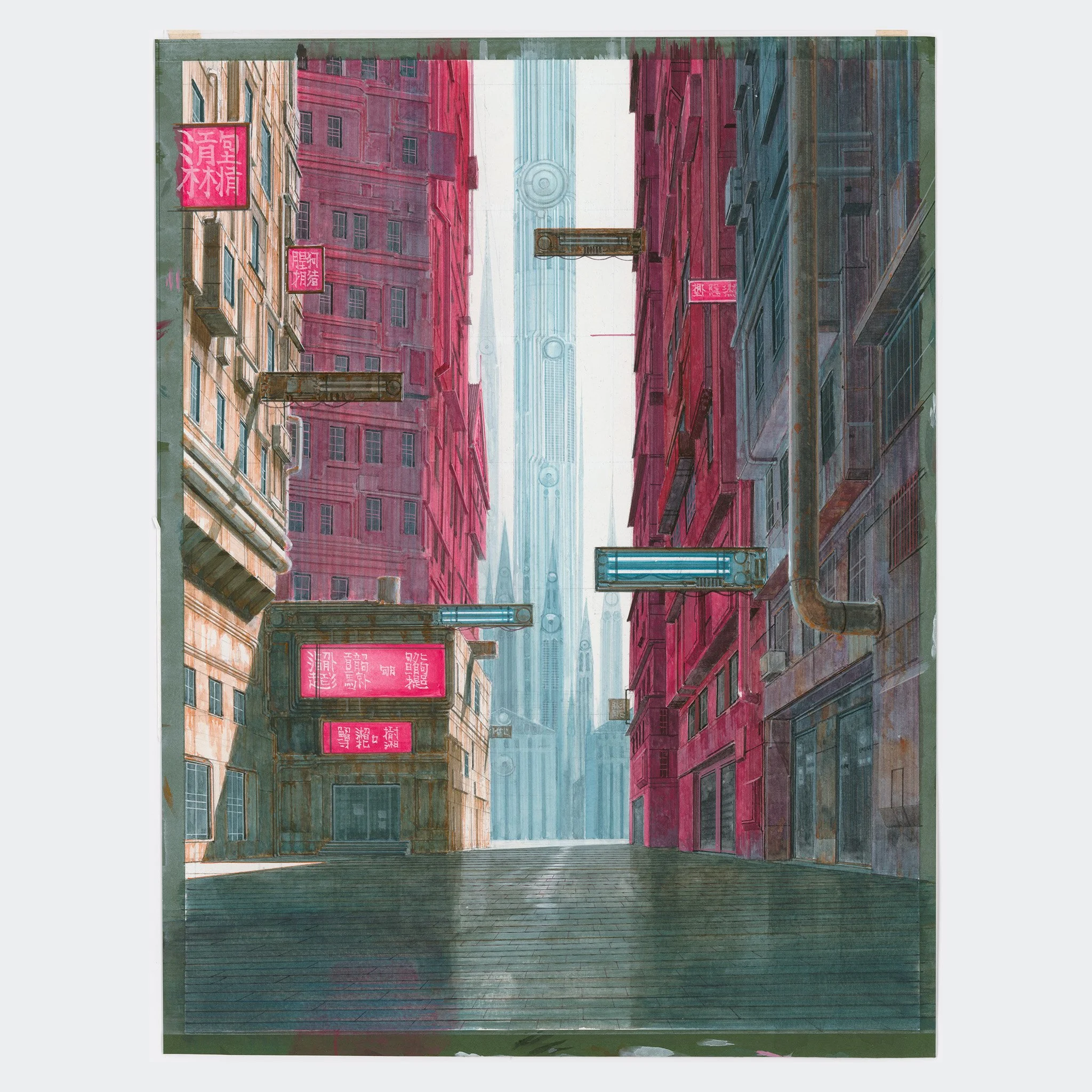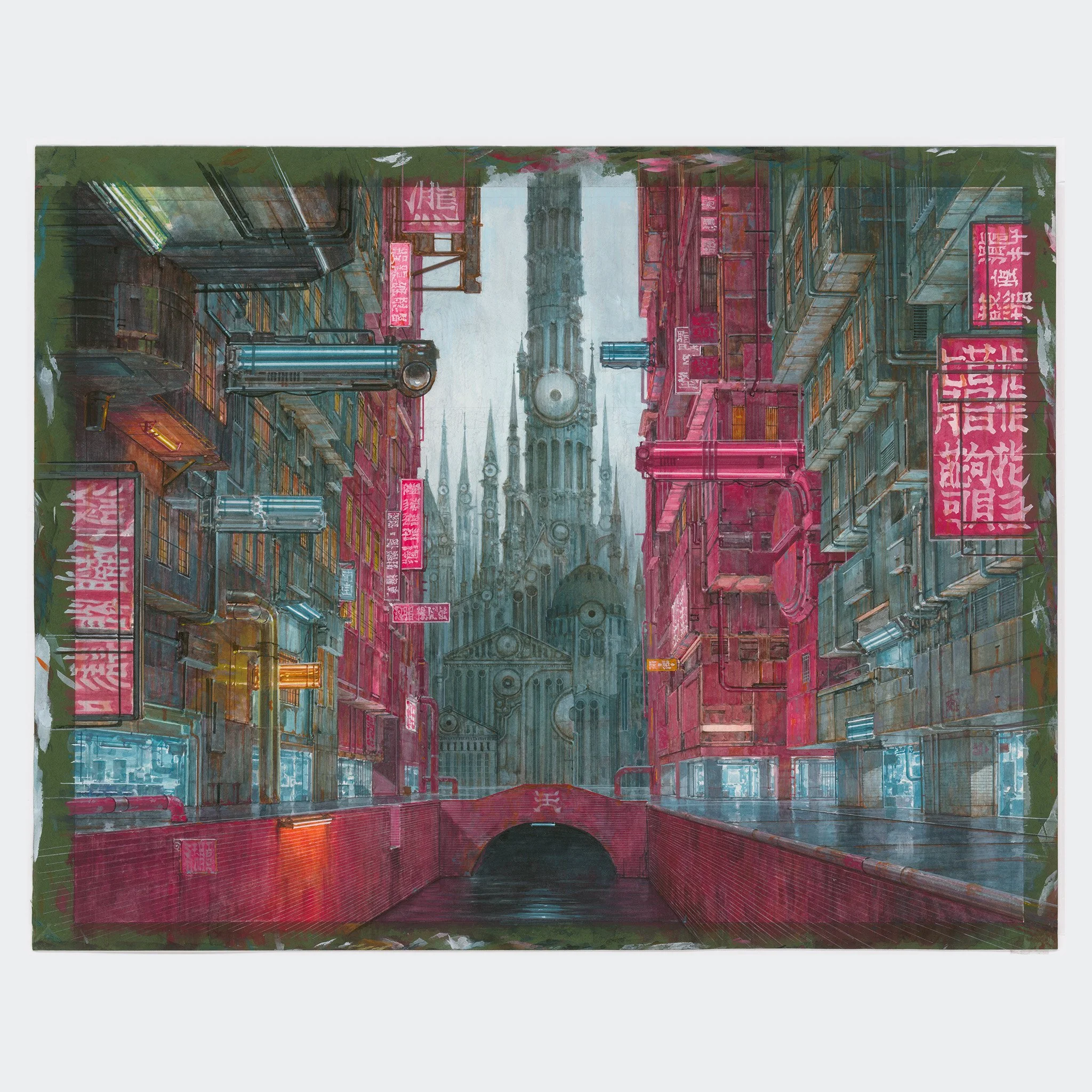 Image 1 of 5
Image 1 of 5

 Image 2 of 5
Image 2 of 5

 Image 3 of 5
Image 3 of 5

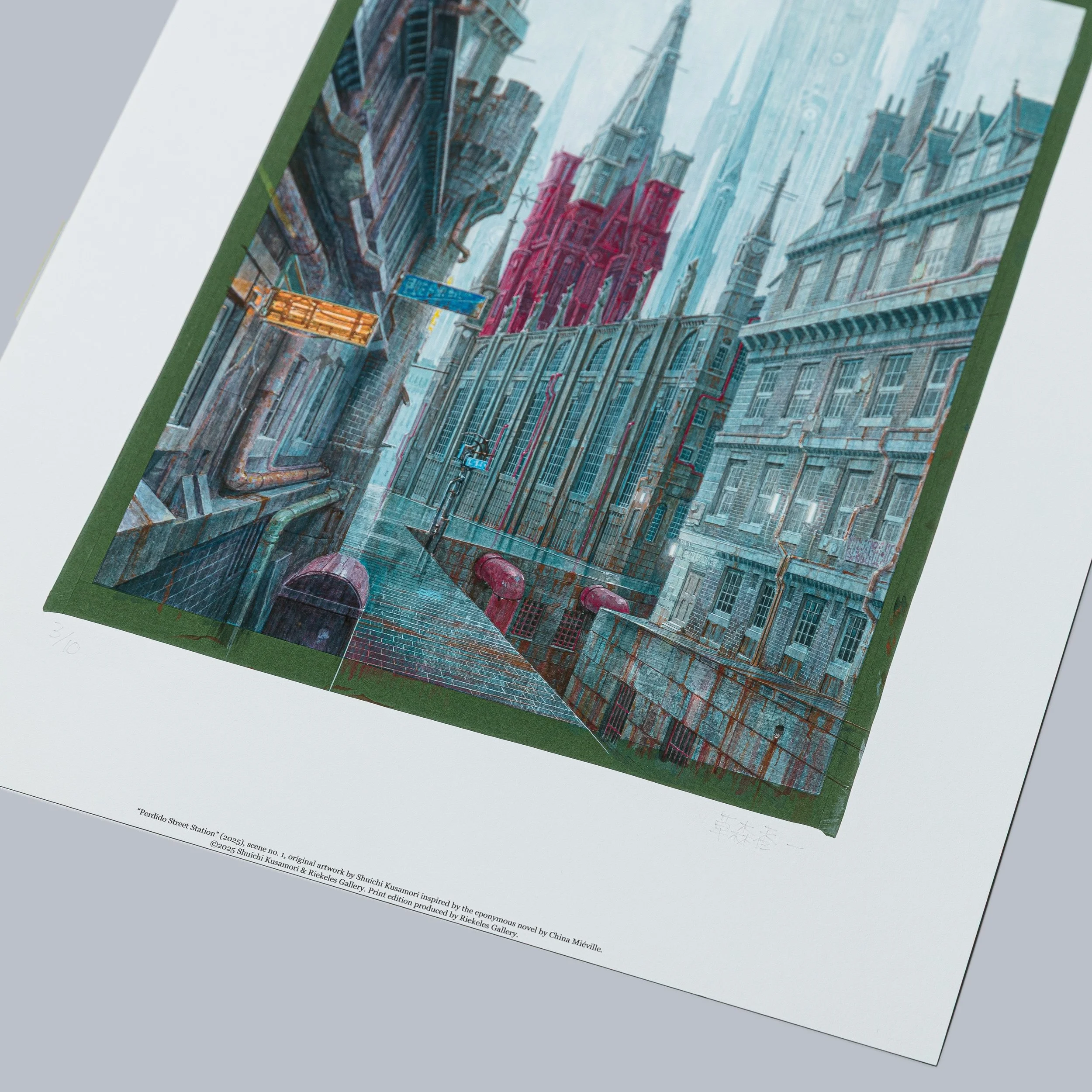 Image 4 of 5
Image 4 of 5

 Image 5 of 5
Image 5 of 5






Perdido Street Station, Scene No. 2, Solegraph
Shūichi Kusamori
Perdido Street Station, Scene No. 2
2024–2025
Solegraph (high-grade fine-art print)
Edition of 10 + 3 AP (artist proofs)
Numbered and signed by the artist
Format: 500 × 400 mm
Artwork Size: 381 × 288 mm
The four paintings in this series were created specifically for our exhibition Art for Animation: Shūichi Kusamori. They are inspired by China Miéville’s novel of the same name (Perdido Street Station, Macmillan, London, 2000).
In 2023, Stefan Riekeles spoke with the artist about the planned exhibition and suggested developing personal, self-initiated works to be shown alongside the commissioned pieces for anime. When asked about literary inspirations, Kusamori immediately named Miéville’s novel. The story is set in the fictional city of New Crobuzon—a dark, industrial place filled with fantastic creatures, magic, and machinery.
The depicted cityscapes are drawn from one of the book’s final chapters. They feature ornaments and small figures reminiscent of Kusamori’s drawings for Fuyu no O(Winter King) and his work on Metropolis. Over the years, the artist has developed his own visual language in which familiar forms, beings, and architectures reappear.
Shūichi Kusamori
Perdido Street Station, Scene No. 2
2024–2025
Solegraph (high-grade fine-art print)
Edition of 10 + 3 AP (artist proofs)
Numbered and signed by the artist
Format: 500 × 400 mm
Artwork Size: 381 × 288 mm
The four paintings in this series were created specifically for our exhibition Art for Animation: Shūichi Kusamori. They are inspired by China Miéville’s novel of the same name (Perdido Street Station, Macmillan, London, 2000).
In 2023, Stefan Riekeles spoke with the artist about the planned exhibition and suggested developing personal, self-initiated works to be shown alongside the commissioned pieces for anime. When asked about literary inspirations, Kusamori immediately named Miéville’s novel. The story is set in the fictional city of New Crobuzon—a dark, industrial place filled with fantastic creatures, magic, and machinery.
The depicted cityscapes are drawn from one of the book’s final chapters. They feature ornaments and small figures reminiscent of Kusamori’s drawings for Fuyu no O(Winter King) and his work on Metropolis. Over the years, the artist has developed his own visual language in which familiar forms, beings, and architectures reappear.













